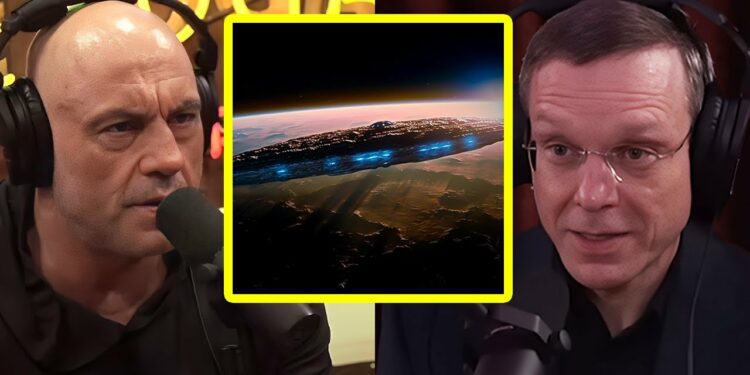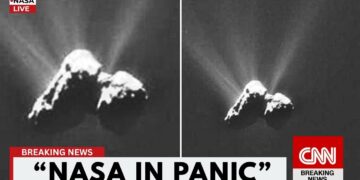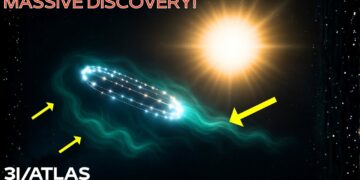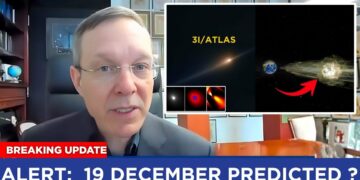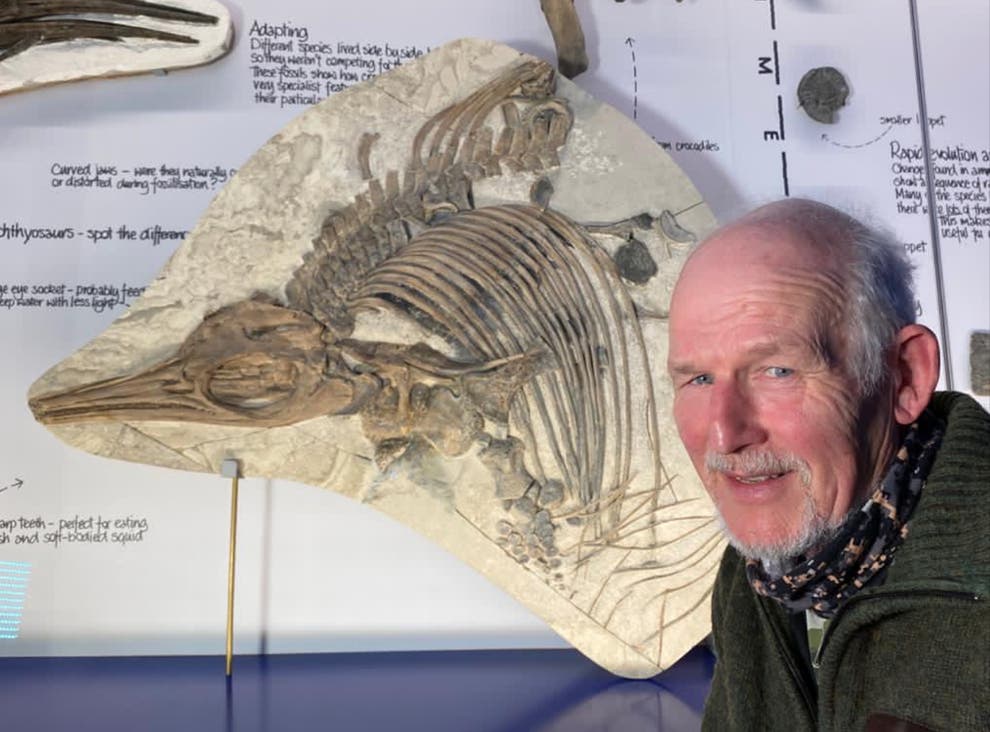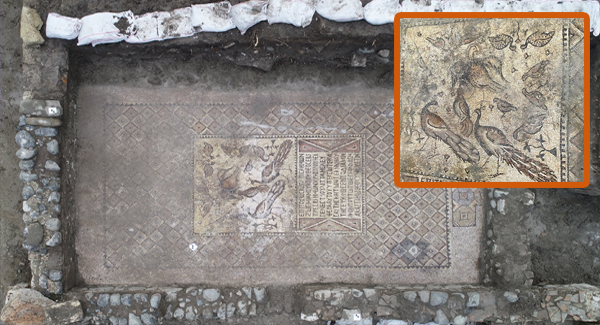In 2017, a mysterious object named ‘Oumuamua, the first confirmed interstellar visitor to our solar system, captivated scientists and the public alike. Discovered by the Pan-STARRS 1 telescope in Hawaii, its name, meaning “a messenger from afar arriving first” in Hawaiian, reflects its unique origin. Unlike typical comets, ‘Oumuamua lacked a luminous coma or dust tail and had an unusual shape—initially thought to be a cigar-like cylinder, later refined to a pancake-like form, roughly 377 feet long, 364 feet wide, and 62 feet thick. Its albedo of 0.1, reflecting just 10% of sunlight, is typical of cometary nuclei.
‘Oumuamua’s behavior was extraordinary. Its hyperbolic trajectory showed it wasn’t bound to our sun, approaching at a high speed of 16.36 m/s relative to the sun’s motion and passing within 24 million miles of our star at perihelion. It exhibited non-gravitational acceleration, a trait common in comets due to outgassing, but ‘Oumuamua showed no visible gas or dust. This puzzled astronomers, as its small size and distance from the sun made significant outgassing unlikely. Theories about its composition include a nitrogen ice fragment, possibly ejected from a Pluto-like body, or a hydrogen iceberg releasing trapped gas, explaining the acceleration without a visible tail. Some, like Harvard’s Avi Loeb, speculated it could be an alien light sail, though most scientists dismiss this idea.
‘Oumuamua likely originated from another planetary system, possibly near the red dwarf star HIP 3757, which it passed a million years ago. Ejected by gravitational interactions with gas giants or stellar flybys, it offers a glimpse into the formation of distant planetary systems. Unlike comet 2I/Borisov, another interstellar visitor with a clear gas and dust tail, ‘Oumuamua’s lack of activity suggests it formed closer to its star or lost volatiles over billions of years.
Astronomers estimate 1,000 to 10,000 interstellar objects may pass through our solar system at any time, most too faint to detect. ‘Oumuamua, now beyond Neptune’s orbit and heading toward Pegasus, is no longer observable, even by the Hubble Space Telescope. Future missions, like the Vera C. Rubin Observatory’s 2025 survey or the 2029 Comet Interceptor, aim to detect and study more such objects, potentially revealing insights into exoplanetary systems and the formation of habitable worlds. These interstellar visitors, like ‘Oumuamua and Borisov, are galactic nomads, offering a unique window into the universe’s vast mysteries.

